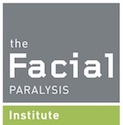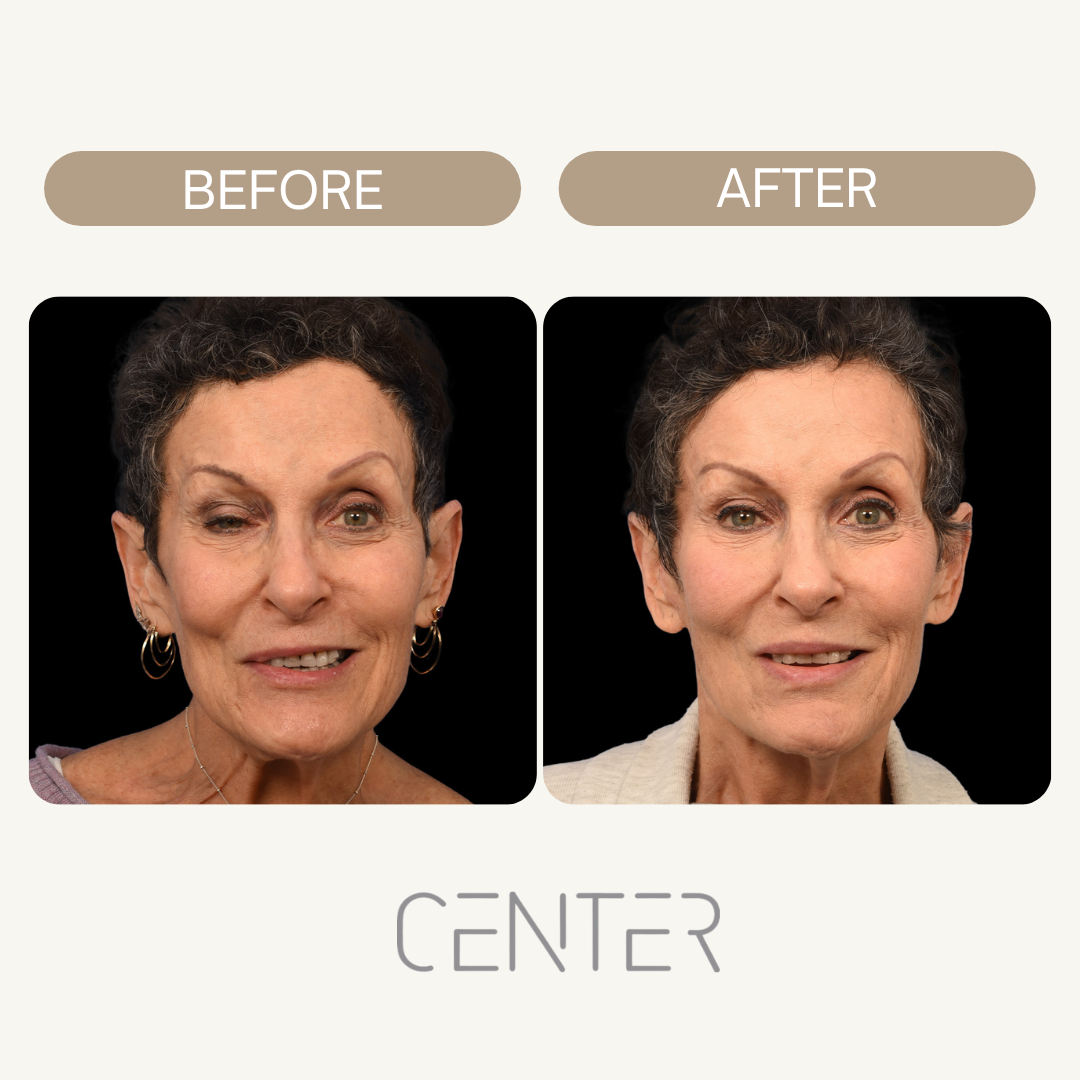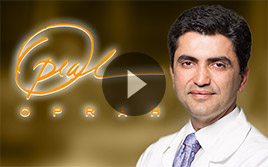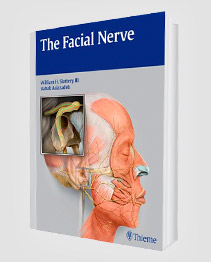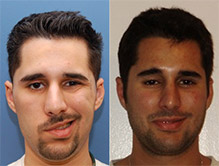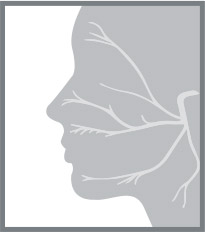Treatment Recommendations for Bell’s Palsy by Top Experts
Developing Bell’s palsy can be a frightening experience and many patients who were recently diagnosed are left with lingering questions; What type of doctor should I see? What can I do to treat Bell’s palsy? How important is the timing when seeking Bell’s palsy treatment? Facial Paralysis expert Dr. Babak Azizzadeh has compiled a list of recommendations for patients with a recent Bell’s palsy diagnosis.
Top Bell’s Palsy Treatments: Expert-Recommended Options
Bell’s palsy treatment success depends on timing and proper specialist care. Here are the proven treatment phases:
- Immediate Phase (0-3 months): Corticosteroids and antivirals within 72 hourS
- Recovery Phase (3-12 months): Specialized facial therapy and neuromuscular retraining
- Advanced Phase (12+ months): Surgical options for persistent symptoms
Why the first 72 hours matter
High-quality evidence supports starting oral corticosteroids as soon as possible after symptom onset. A large Cochrane review found steroids significantly improve the chance of complete recovery. The American Academy of Neurology guideline recommends offering steroids for new-onset Bell’s palsy and notes that adding antivirals provides, at most, a small additional benefit.
Patients who can’t access a facial nerve specialist within hours should still seek urgent evaluation via primary care, urgent care, or the emergency department to begin treatment promptly.
Bell’s Palsy Onset:
- Patient needs to see a doctor immediately upon noticing the facial paralysis and start on a course of steroid and antiviral medication. It’s best to seek the help of a facial nerve expert, but if this is not possible, patients should see their ENT, Neurologist, or even go to the Emergency Room for help.
- The doctor should rule out any serious cause of facial paralysis such as a tumor or stroke.
- Patient should take extra care of the affected eye: tape it closed at night, use artificial tears and lubrication, and possibly see an ophthalmologist.
Bell’s Palsy After 3 Months:
- If the paralysis does not improve after 3 months of the onset, the patient should proceed with imaging (an MRI, or CT scan), ordered by their doctor.
- If the patient’s paralysis is starting to improve after 3 months, it is an appropriate time to start facial physical therapy.
- It’s important for patients to avoid electrical stimulation as this can often times cause synkinesis.
- If the patient’s paralysis is improving, but they notice signs of tension in their neck, over activity of their laugh lines, eye narrowing, and or trouble smiling, it could be time to start neuromuscular retraining. Neuromuscular retraining involves learning subtle exercises to teach the body how to use its muscles more efficiently.
- The patient may benefit from Botox treatments to help relieve the symptoms of synkinesis. When considering Botox to treat facial paralysis, it’s extremely important to seek the help of a facial nerve expert who is very experienced with this treatment.
Imaging and ruling out other causes
When recovery stalls beyond 3 months, targeted imaging helps exclude alternative diagnoses. The AAO-HNSF clinical practice guideline advises clinicians to consider MRI or CT when the course is atypical, progressively worsening, or recurrent. Centers with facial paralysis expertise also emphasize eye protection and rehabilitation while evaluation proceeds. If corneal exposure is present, follow evidence-based eye care: daytime artificial tears, nighttime ointment or moisture goggles, and temporary taping as needed—see the NHS treatment guidance and this patient leaflet on eye care in facial palsy.
Warning Signs That Require Immediate Specialist Care
- Sudden complete facial drooping on one side
- Inability to close eye completely
- Loss of taste on front two-thirds of tongue
- Increased sensitivity to sound (hyperacusis)
- Pain around the jaw or behind the ear
- Drooling or difficulty eating/drinking
Does Bell’s Palsy Reoccur? Here’s What You Need to Know
Additional Supportive Treatments for Bell’s Palsy
Beyond medications and surgery, patients often benefit from supportive therapies that help protect eye health, reduce discomfort, and promote recovery. Leading health organizations highlight the following:
- Eye care strategies: Frequent use of artificial tears, moisture goggles at night, and taping the eyelid closed reduce risk of corneal injury.
- Facial massage and stretching: Gentle daily exercises can maintain muscle flexibility and minimize stiffness.
- Counseling and psychological support: Living with visible paralysis impacts confidence; mental health support can improve overall quality of life.
- Speech therapy: For patients experiencing articulation issues, speech pathologists can provide targeted training.
Incorporating these non-surgical treatments can ease daily life while patients wait for nerve recovery or prepare for advanced interventions.
Bell’s Palsy After 1 Year:
- If the patient has explored the options above, and still has residual symptoms of facial paralysis after a year of their Bell’s palsy diagnosis, it could be time to explore surgical options.
- Patient needs to see a facial nerve expert like Dr. Azizzadeh who can review their medical history, do a comprehensive physical exam, and make recommendations about what surgical procedure will be most beneficial.
- Often times, the best outcomes for patient who still have partial paralysis are a result of a multi-dimensional approach involving surgery like selective neurolysis, with regular botox treatments and physical therapy.
Top Bell’s Palsy Specialist in the Country
Dr. Babak Azizzadeh is a world renowned facial nerve expert who specializes in treating patients with various forms of facial paralysis. He is a pioneer and leader in the facial nerve world and is highly regarded for his work with both adults and children.
Dr. Azizzadeh is double board certified in otolaryngology and facial plastic surgery which gives him a unique insight into both the aesthetic and function of the facial nerve. After completing his specialized training at Harvard Medical School, Dr. Azizzadeh founded the Facial Paralysis Institute.
He is also the founder and director of the Facial Paralysis Foundation, a group which offers information and support for patients and loved ones affected by facial paralysis. Dr. Azizzadeh has been featured in various media outlets including The Doctors, The LA Times, The NY Times, and the Oprah Winfrey Show.
He has written 6 best-selling medical textbooks including the widely recognized The Facial Nerve. Dr. Azizzadeh is deeply committed to helping people from across the globe regain their facial function and smile, making him one of the most sought after surgeons in the world.
Related: Bell’s Palsy and Permanent Eye Damage
How to Choose the Best Bell’s Palsy Specialist Near You
Essential Specialist Qualifications:
- Double board certification in ENT and facial plastic surgery
- Subspecialty focus exclusively on facial nerve disorders
- High case volume treating 200+ Bell’s palsy patients annually
- Academic credentials with published research and teaching experience
Red Flags to Avoid:
- Practitioners recommending electrical stimulation therapy
- Specialists without facial nerve subspecialty training
- Providers promising complete recovery in all cases
- Clinics that don’t coordinate with specialized physical therapists
Questions to Ask During Consultation:
- How many Bell’s palsy cases do you treat each year?
- What’s your success rate for cases similar to mine?
- Do you work with facial rehabilitation specialists?
- What happens if initial treatments don’t work as expected?
When to Seek a Second Opinion
Because outcomes depend heavily on timing and expertise, patients should not hesitate to seek a second opinion if they feel uncertain about their current care. Second opinions are especially valuable when:
- Symptoms have not improved after 3–4 months despite initial treatment.
- A provider recommends facial paralysis surgery but has limited experience with Bell’s palsy cases.
- A clinic discourages physical therapy or eye protection, both considered standard supportive measures.
- The patient is considering advanced options such as selective neurolysis or gracilis muscle transfer.
Seeking expert input from a high-volume Bell’s palsy specialist ensures that patients understand all treatment phases, available research, and realistic outcomes.
Contact the Facial Paralysis Institute
If you or a loved one has been diagnosed with Bell’s palsy, call the Facial Paralysis Institute to schedule a consultation with facial nerve expert Dr. Babak Azizzadeh today! (310) 657-2203
Request your consultation with Dr. Azizzadeh today
Call us at (310) 657-2203 to schedule an appointment.
Schedule a Consultation